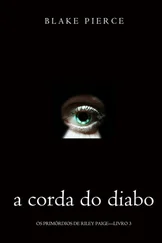In this example, the stock drops to F and closes at 15.70. The low at B is 15.71, so price has closed below the bottom of the pattern at F. We use rule 2 to find the ultimate high: The highest high between the entry price (17.06) and F (the bottom of the pattern) is E. E is the ultimate high.
Let's pretend the double bottom is much lower so I can tell you how rule 1 works. Let's also assume that the close at J is at 13.
Rule 1 says to look for the highest high before price drops 20%, measured from the high to the close. The high between the buy price and J is E, at 17.80. So we look for price to close 20% below this, or 14.24. When price closes at or below 14.24 (again, assuming this happens at J, at 13), we've found the ultimate high, which is E, at 17.80. So we bought at 17.06 and sold at 17.80 and made a profit of 74 cents a share.
We didn't use a stop‐loss order. We didn't use MACD or the moving average crossover. We executed a perfect trade by buying exactly when we should have and selling at the ultimate high. We tested how well the double bottom worked if you traded it perfectly .
And that's how I measured how bullish chart patterns work.
Years ago, someone asked me if this was the same as placing a trailing stop‐loss order 20% below the high price. It's not. If you did that, you'd be stopped out at J (the fictitious one at 13) and not E.
Incidentally, the 20% value in rule 1 comes from the idea of bull and bear markets. A decline of 20% from a high in the market averages means it slid into a bear market. A rise of 20% off a market low means it entered bull market territory. I applied that idea to individual stocks when searching for the ultimate high and low.
Finding the ultimate low for bearish chart patterns works similarly. Let's take the example of the head‐and‐shoulders top at GEH. We see the left shoulder at G, the head at E, and the right shoulder at H. Price confirms the pattern when price closes below the neckline. Because the neckline slopes downward in this example (not shown), I recommend entering the trade when price closes below the right armpit, which I show as the horizontal line at I. You'd short at the open the next day.
If you can program your computer to find head‐and‐shoulders tops, that's how you enter a trade. Nothing magical here.
What about the exit signal? Again, we could use a stop‐loss order, but we already know that's not going to work from our previous example. We'd be testing various locations of the stop and not the chart pattern. So let's find the ultimate low.
Two rules:
1 Find the lowest low before price rises 20%, measured low to close.
2 If price closes above the top of the chart pattern, then the search for the ultimate low ends, and we use the lowest low found after entering the trade.
In this case, price breaks out downward from the head‐and‐shoulders top, drops to J, and then rises. The low at J is 14.60, so a 20% rise is 17.52. A close at 17.52 or higher will end the search for the ultimate low.
When price closes at K (at or above 17.52), the search for the ultimate low is over. We've found the ultimate low, which is J.
If K was a bit higher, then rule 2 would come into play. That's because price would close above the top of the head‐and‐shoulders, stopping the search for the ultimate low.
In this example, we are trading this head‐and‐shoulders perfectly. We are entering the trade at the opening price the day after a downward breakout, and we are closing it out at the ultimate low, the lowest low before price rises. A perfect trade. We are testing how well this chart pattern works. We're not testing stop‐loss order placement or MACD or a moving average crossover scheme.
The performance of most of the chart patterns in this book follows these two ideas: the ultimate high and the ultimate low. For bullish patterns, I look for the ultimate high. For bearish patterns, I look for the ultimate low.
Once you understand what a perfect trade means, you can look for failures. What does it mean when a chart pattern fails? To answer that, I had to invent a new concept, which I call the breakeven failure rate or the 5% failure rate . Those two phrases are synonyms. All I did was count how many chart patterns failed to see price rise or decline more than 5%.
In a bull market, for example, I found that 18.8% of head‐and‐shoulders top patterns failed to see price drop more than 5%. If your cost of trading is 5%, then you'll know that nearly 20% of head‐and‐shoulders you trade, if you trade them perfectly and often enough, will fail to cover your costs.
So there you have it. Once you understand that I'm measuring performance from the breakout price to the ultimate high or low, then you'll understand most of the statistics in this book. You'll understand that the performance numbers are based on perfect trades , made hundreds or even thousands of times to arrive at the average rise or decline I show in Table x.2 (where x is the chapter number).
Are the results realistic? Not really. You likely won't be able to duplicate them in real life. You might do better or worse, depending on your skill and luck.
The double bottom example entered the trade the day after the breakout. If you placed a buy stop a penny above the top of the double bottom, you'd be entering at a better price (most of the time, based on my tests) than using the opening price the day after the breakout.
So you could do better than the numbers shown in this book. All you have to do is find the price of the ultimate high, weather the 20% drop, wait for a recovery, and sell at a price above the ultimate high. People who buy and hold do that all of the time.
For traders, though, it's more difficult. Finding the ultimate high in real time (as it's happening) is challenging. That's why people like me write these types of books.
1 How to Trade Chart Patterns
This book will help you identify dozens of chart pattern types. It will also do what no other book does: tell you how chart patterns have performed, over three decades, using statistics from hundreds or even thousands of samples.
That's not enough. That information won't make you a successful trader, but it will give you an edge over other traders. What's missing?
Experience.
If you have enough experience trading stocks, you should be able to look at a chart and determine whether it's time to buy, sell, or stay in cash. That's not as difficult as it seems.
When you look at a chart, look for a bullish chart pattern, such as a double bottom. If you find one that confirms as a valid chart pattern, then it's time to buy.
A confirmed double top means it's time to sell. If you do nothing else except trade those two chart patterns, you could make money. Buy when a double bottom appears (or any bullish pattern) and sell when a double top confirms (or any bearish chart pattern). The ride between those two might be bumpy, so you'll need to know how to use a stop‐loss order.
Add bells and whistles—such as making sure the market is trending upward and the industry to which the stock belongs is also trending upward—and you'll have a smoother ride. Having both of those on your side increases your chance of a successful trade. Complete the picture with a bullish stock aching to rise, and you're good to go. I'll discuss this setup later in this chapter.
Let me share with you a few ideas on how I make my trading choices. I'll tell you about a few swing trading setups that work and then discuss the winners of performance contests.
Bottom Fishing, Buy the Dip
Читать дальше












